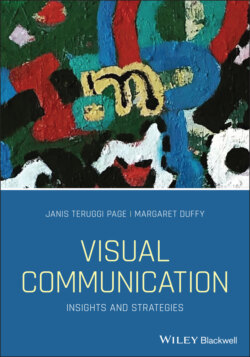Читать книгу Visual Communication - Janis Teruggi Page - Страница 9
Оглавление
Preface
How can we make sense of the myriad visual images surrounding us today? How can we strategically use images with a clear understanding of their function and impact?
This book answers these questions by providing new “ways of seeing” visual representations through different lenses and in different contexts. It then provides practical guidance for creating purposeful and ethical visual communication.
The authors recognize the accelerating dominion of images in communication, society, and culture. We human beings process images and video effortlessly and automatically. Visuals carry an emotional and visceral punch that text can rarely, if ever, match. As multinational marketers, social media influencers, and teenagers on TikTok know, visuals create their own language, accessible to all, regardless of traditional textual barriers of understanding such as education or language.
We've watched as entertainment and information have morphed into largely image‐based communication including advertising and brand messaging, organizational communication, and individual creation and uploading of images, memes, and videos of all kinds. As of this writing in early 2021, people are watching 5 billion YouTube vides every day and Instagram has over one billion users worldwide. U.S. digital advertising expenditures are projected to grow to 22.18 billion U.S. dollars in 2021 (https://www.statista.com/statistics/256272/digital‐video‐advertising‐spending‐in‐the‐us/).
Most of us take the sphere of images for granted: it's just the way the world is. Of course, human beings have always created symbolic structures of meaning that shape how we interpret and participate in social life. However, we also tend to treat these image systems as natural phenomena. We conveniently forget that we ourselves invented these structures of meaning and it's important we understand their significance and meaning in more thoughtful and nuanced ways.
For some years, we've been conducting research on images, moving and still, and their various roles in society. We've studied and written about digital visual folklore in emails about President Obama, the widespread sharing of memes of football star Richard Sherman, comedy television's performance of vice presidential debates, presidential candidates' online visual storytelling, images of morality in political TV ads and news coverage, sexual imagery in advertising, issues in visual persuasion ethics, photographic coverage of the Pope's 2015 visit to Cuba, ethical implications of VR, AR, and 360° technologies, and satiric images of Trump as spectacle in global magazines, among other visual topics.
Inspired by our previous work, we wrote this book for students and scholars with the intent of providing insights into the role of visuals in our dynamic social environment. Ralph Waldo Emerson said, “We are symbols and we inhabit symbols” (The Poet, 1844). We hope this book connects with a broad range of scholars and practitioners in the arts, humanities, social sciences, engineering, technology, and neuroscience and serves as an invitation to future study.
